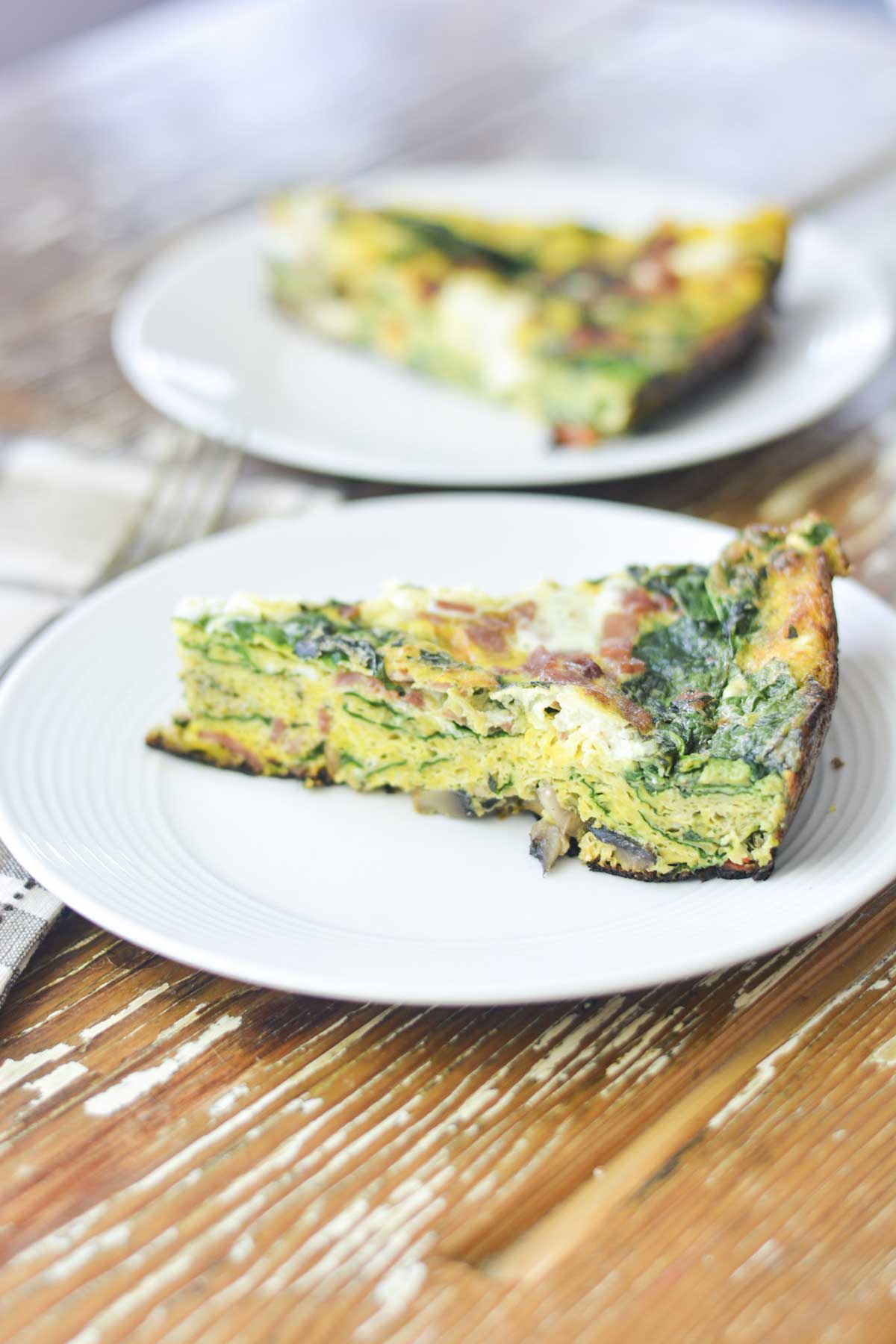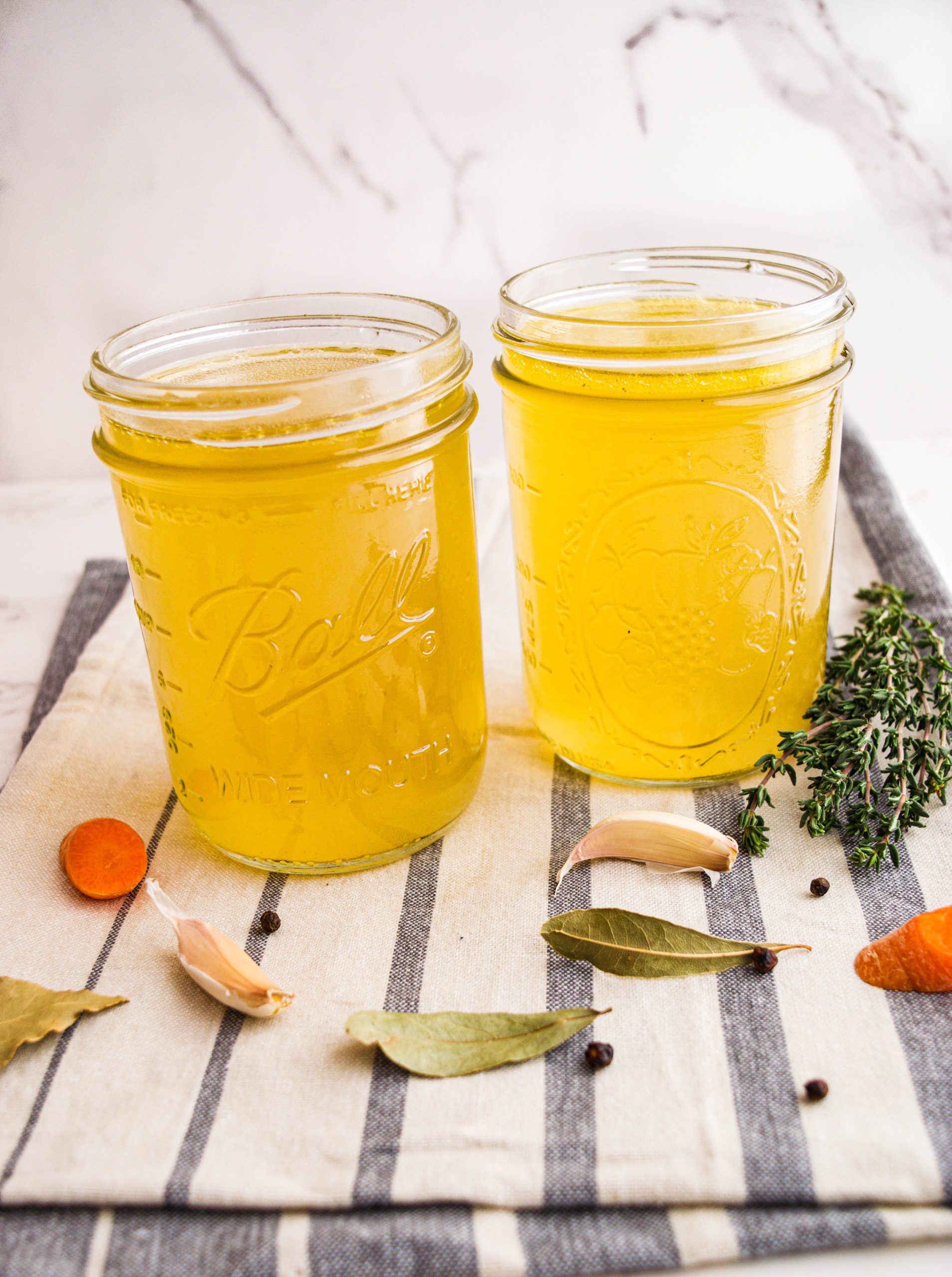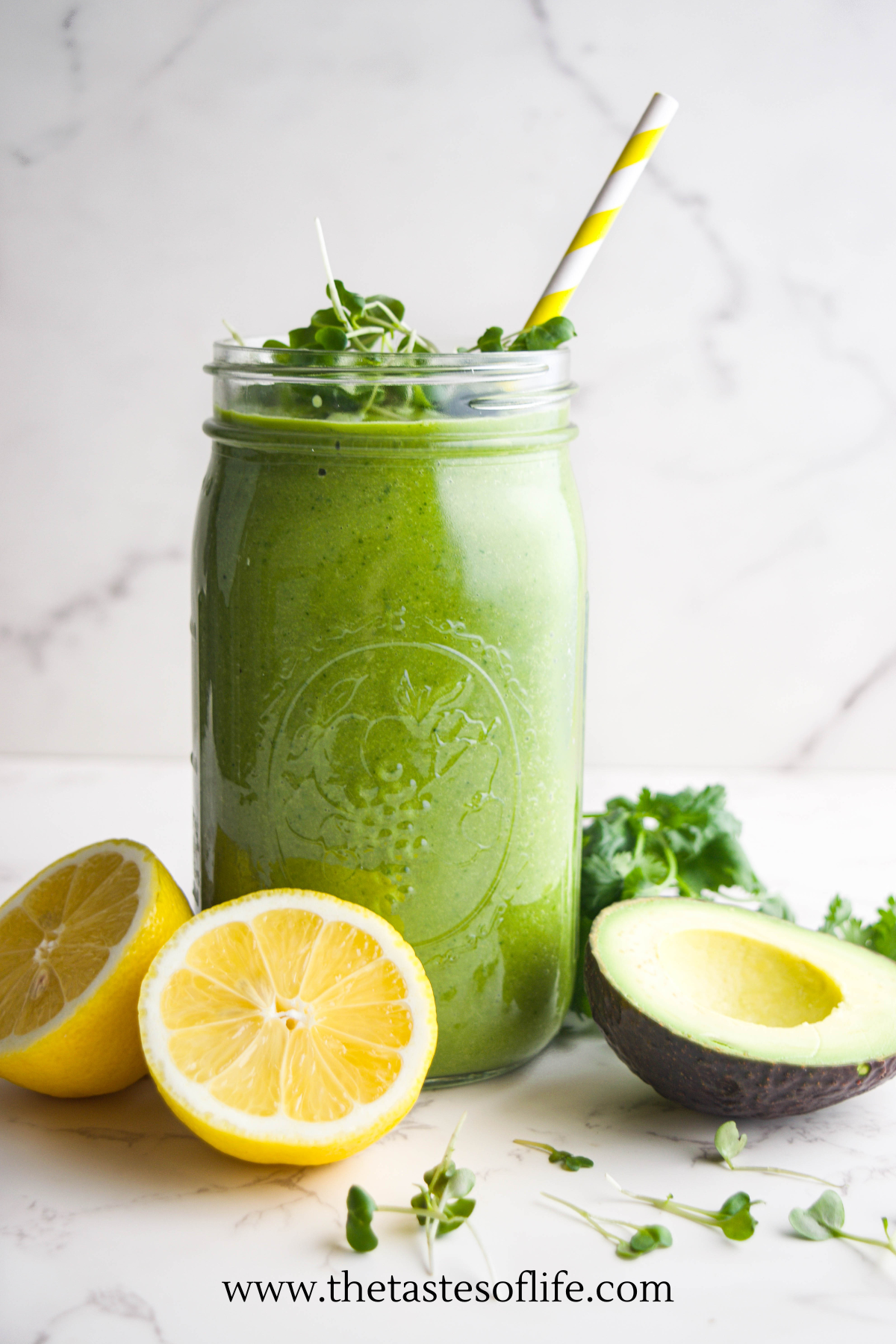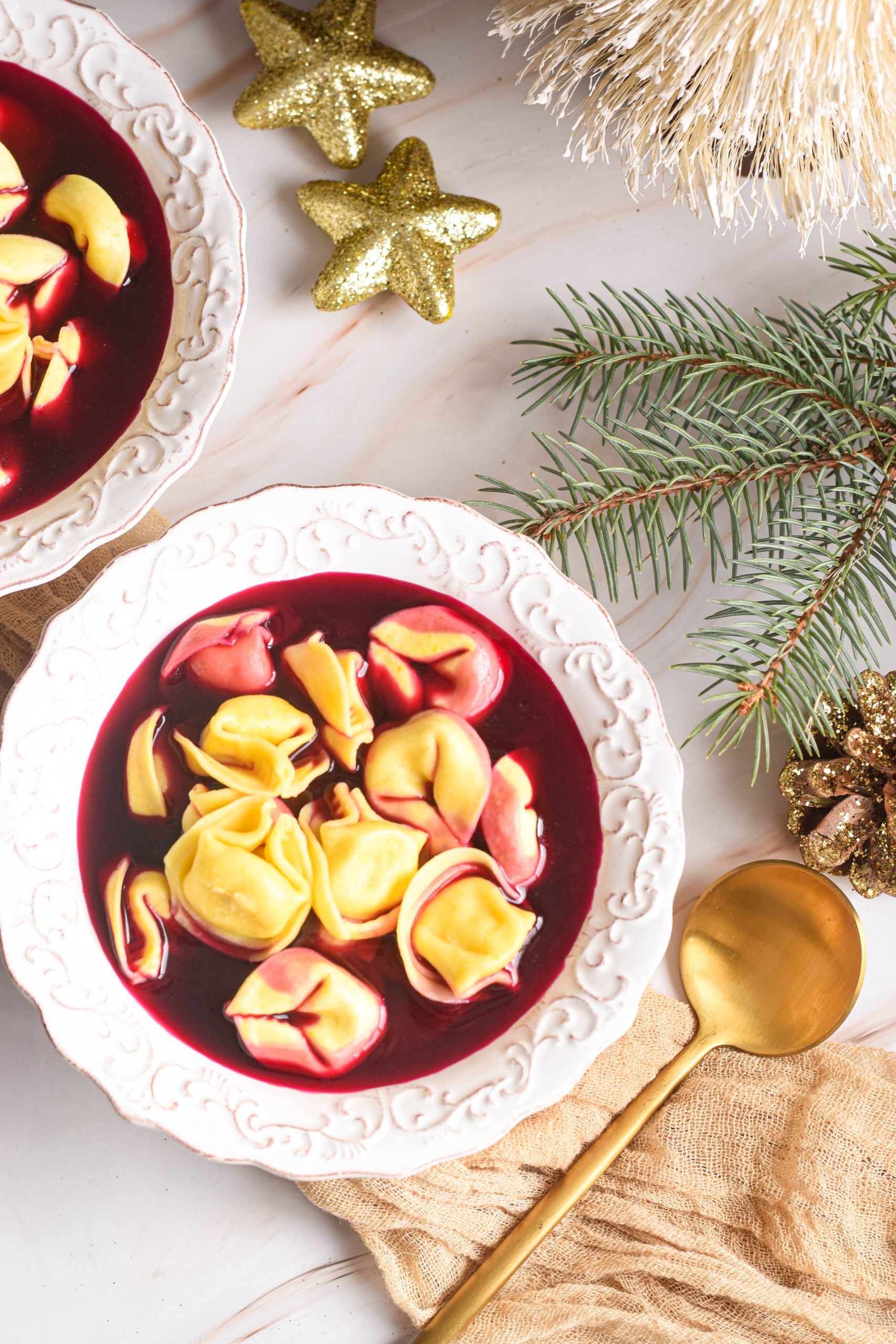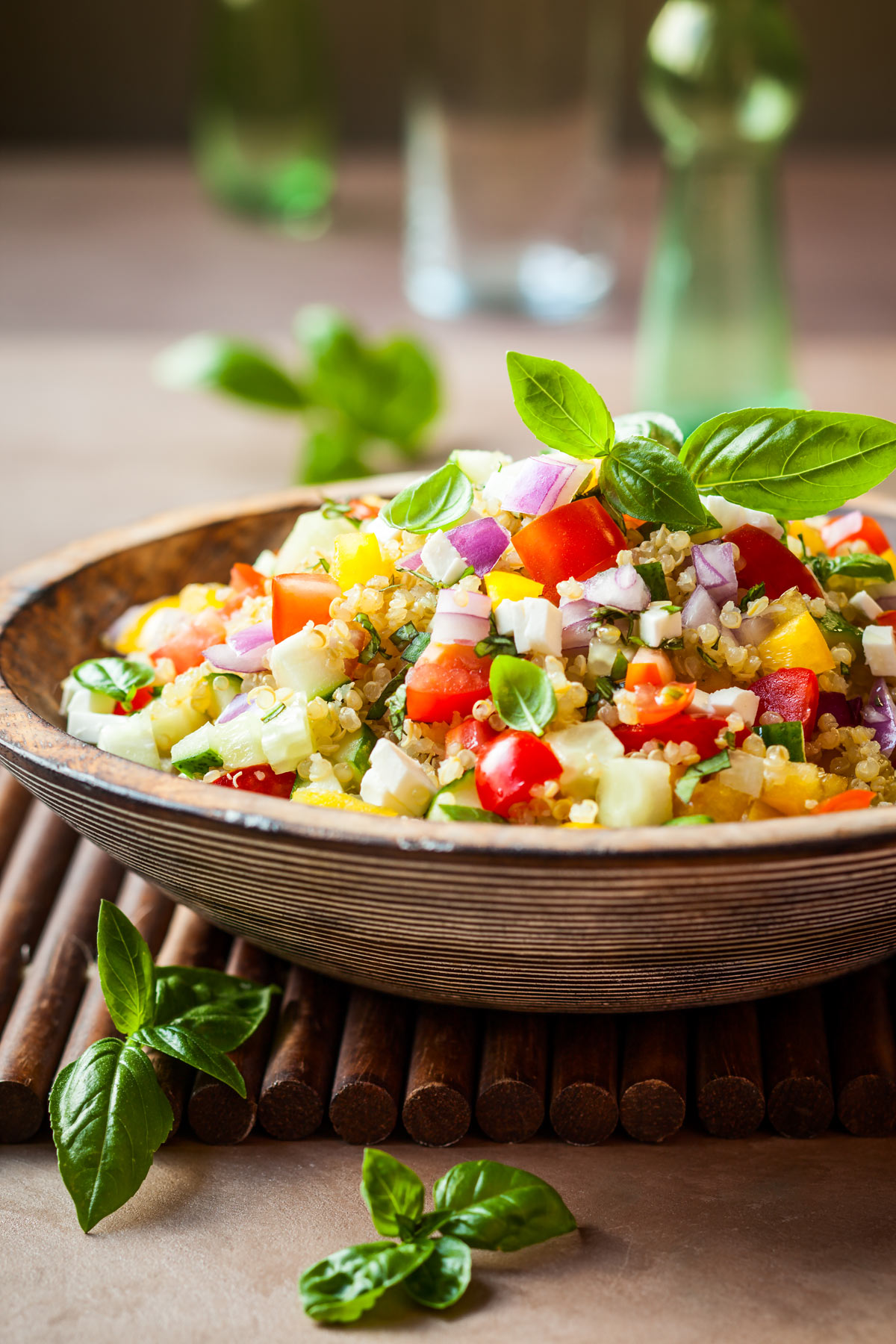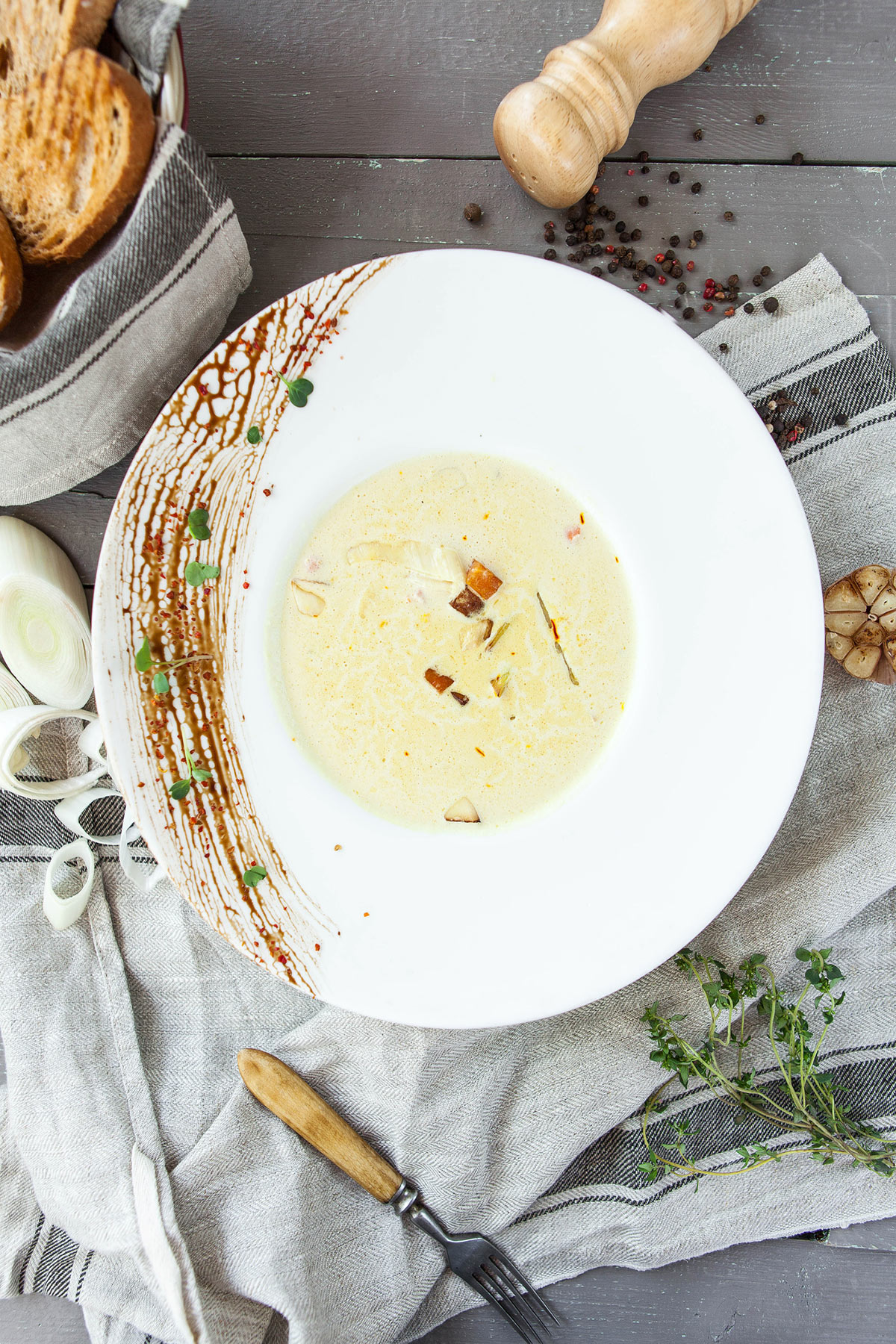Holiday Magic in the Kitchen: Homemade Eggnog Delight
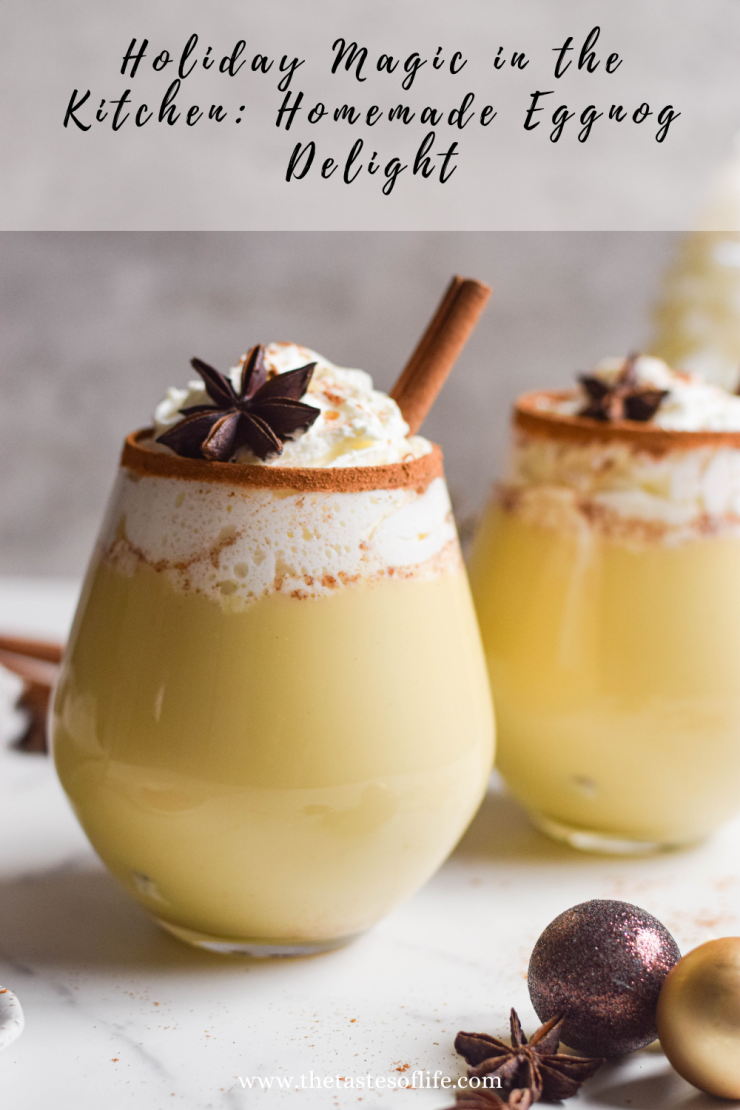
It’s that time of year again! Christmas is in the air, the stores are all playing Christmas music, and I am excited to create holiday recipes. This classic Homemade Eggnog recipe is creamy and thick with a nutmeg undertone. It will be your new favorite holiday treat!
As the holiday season approaches, a certain magic in the air calls for festive gatherings and indulgent treats. One classic beverage that has been synonymous with winter celebrations is eggnog. While store-bought versions are readily available, there’s something truly special about crafting your own homemade eggnog. Making eggnog takes me back to my childhood cooking for Christmas with my family.
In this blog, we’ll explore the history of eggnog, the key ingredients that make it so delectable, and provide you with a step-by-step recipe to create a velvety, flavorful concoction that will elevate your holiday festivities.
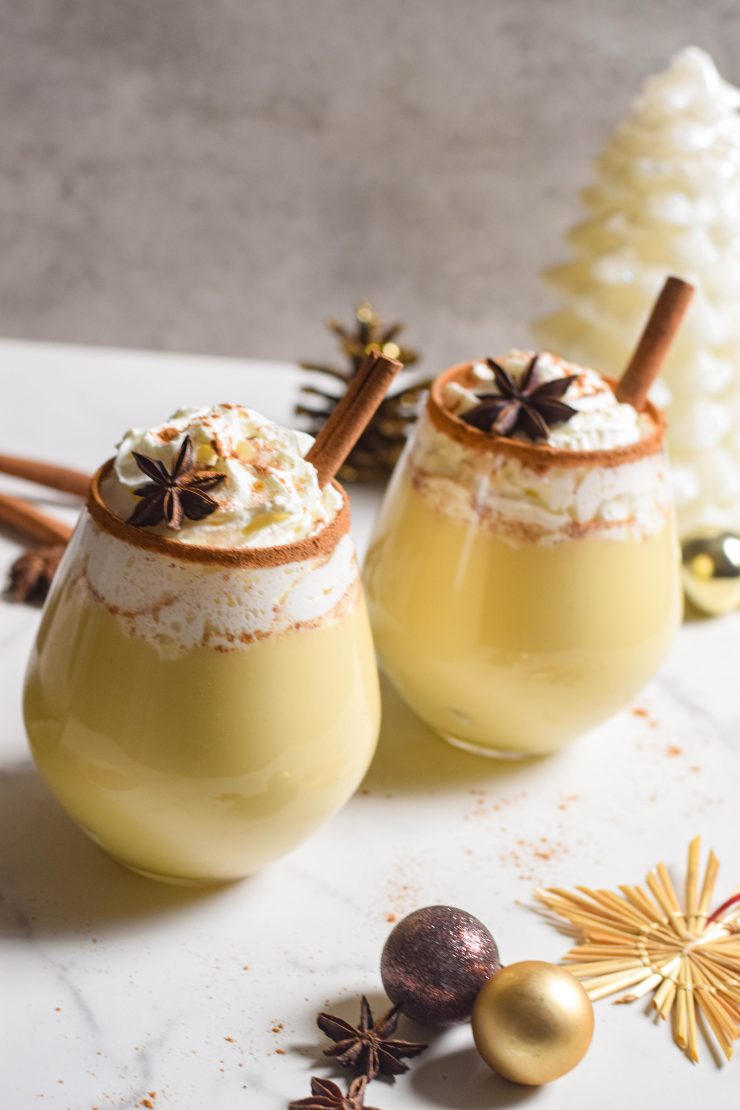
The History of Eggnog
Eggnog’s origins can be traced back to medieval Britain, where it was initially known as “posset,” a hot, milky ale-like drink. Over the centuries, this beverage evolved, and by the 18th century, it had made its way to the American colonies. The term “eggnog” is believed to have originated from the word “noggin,” which referred to a small wooden mug used to serve alcoholic beverages. Combining eggs, dairy, and spirits, eggnog quickly became a symbol of celebration during the holiday season.
The term “eggnog” has an interesting linguistic history, and its origins can be traced back to 18th-century England. The name is believed to be a combination of two words: “nog” and “egg.”
- Nog: The word “nog” likely comes from the Middle English term “noggin,” which referred to a small, carved wooden mug or cup used to serve alcoholic beverages. This term was commonly used in the context of enjoying a drink, especially one made with alcohol.
- Egg: The second part of the word “egg,” is more straightforward. It directly refers to the key ingredient in the beverage—eggs. Eggnog is traditionally made with beaten eggs, milk, and sugar and is often spiked with alcohol.
So, when you combine “nog” and “egg,” you get “eggnog,” a term that reflects the drink’s historical roots and the key components of the beverage. The name captures both the vessel in which it was often served and the primary ingredient that gives it its distinctive texture and flavor.
Key Ingredients
- Eggs: The star of the show, eggs provide the rich, creamy texture that is characteristic of eggnog. Both the yolks and whites are used, with the yolks contributing to the velvety consistency and the whites being whipped to create a frothy, airy texture.
- Dairy: Whole milk and heavy cream are essential components, offering a luxurious mouthfeel to the eggnog. Combining these dairy products creates a harmonious balance between richness and smoothness.
- Sweetener: Traditionally, white sugar is used to sweeten eggnog. However, you can experiment with alternatives like brown sugar or a combination of both to add depth and complexity to the sweetness.
- Spices: Ground nutmeg and cinnamon are the quintessential spices that give eggnog its distinct flavor profile. Freshly grated nutmeg adds an aromatic quality, while cinnamon provides a warm, comforting undertone.
- Vanilla Extract: A touch of vanilla extract enhances the overall flavor profile of eggnog, adding a sweet and aromatic dimension that complements the spices.
- Alcohol (optional): While not a traditional ingredient, adding spirits like rum, bourbon, or brandy is a popular customization. The alcohol contributes to the flavor and acts as a preservative, allowing the eggnog to age and develop more complexity over time.
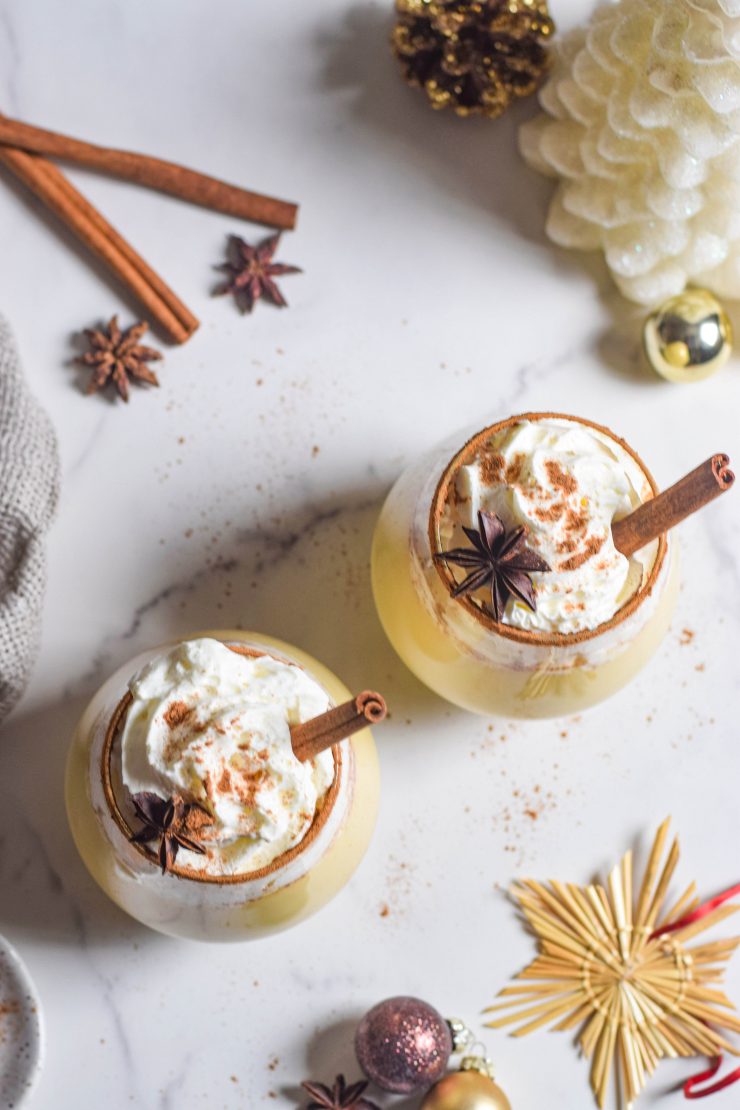
Does Homemade Eggnog Have Raw Egg?
Yes, traditional homemade eggnog recipes often include raw eggs. The eggs are typically separated, with the yolks used in the main mixture, and the whites are often whipped separately and folded in later to create a frothy texture.
In this recipe, I heat egg yolks to a temperature that is safe to eat but also tastes a little eggy. It is EGGnog, for goodness sake.
If you are concerned about the safety of raw eggs, use pasteurized eggs or alternative methods to make eggnog without them. One approach is to use pasteurized egg products or egg substitutes. Additionally, there are cooked eggnog recipes where the egg and milk mixture is heated to a specific temperature, effectively pasteurizing the eggs and reducing the risk of contamination.
Ultimately, whether you choose raw eggs or a pasteurized or cooked version, it’s crucial to prioritize food safety to ensure a delightful and safe holiday indulgence.
How to Make Homemade Eggnog
Making it is simple!
- Separate the Eggs: Begin by separating the egg yolks from the whites. Place the yolks in a large mixing bowl and set the whites aside.
- Beat the Egg Yolks: Slowly add the sugar to the egg yolks and beat it until the mixture becomes pale and slightly thickened. This step ensures a smooth and creamy eggnog. If you are using dark sugar, the mixture will not be pale.
- Combine Milk and Cream: In a separate saucepan, combine the whole milk and heavy cream. Heat the mixture over medium heat until it reaches a scalding temperature (just before boiling). Stir occasionally to prevent scorching.
- Temper the Eggs: Gradually pour the hot milk and cream mixture into the egg yolks, whisking constantly. This process, known as tempering, prevents the eggs from scrambling. Continue whisking until the ingredients are well combined.
- Return to Heat: Pour the egg and milk mixture back into the saucepan and return it to the stove over medium heat. Stir continuously until the mixture thickens slightly, coating the back of a spoon. Be cautious not to let it boil.
- Add Spices and Vanilla: Remove the mixture from the heat. Once the mixture has thickened, add the ground nutmeg, cinnamon, and vanilla extract. Stir well to distribute the spices evenly.
- Cool the Mixture: Allow the eggnog base to cool to room temperature. Once cooled, cover the bowl and refrigerate for at least two hours or overnight to allow the flavors to meld and intensify.
- Whip the Egg Whites: Whip the egg whites in a clean, dry bowl until stiff peaks form. Gently fold the whipped egg whites into the chilled eggnog mixture, creating a light and frothy texture. Serve immediately. ( You can totally skip this process if you want. This way your eggnog can stay refrigerated, and you can drink it later).
- Add Alcohol (Optional): If you choose to include alcohol, stir in your preferred spirit at this stage. The alcohol enhances the flavor and acts as a preservative, allowing you to store the eggnog for an extended time.
- Serve and Enjoy: Ladle the homemade eggnog into cups or mugs, garnishing each serving with whipped cream and a sprinkle of ground nutmeg. Optionally, add a cinnamon stick for a festive touch. Serve chilled and savor the rich, creamy goodness of your homemade creation.
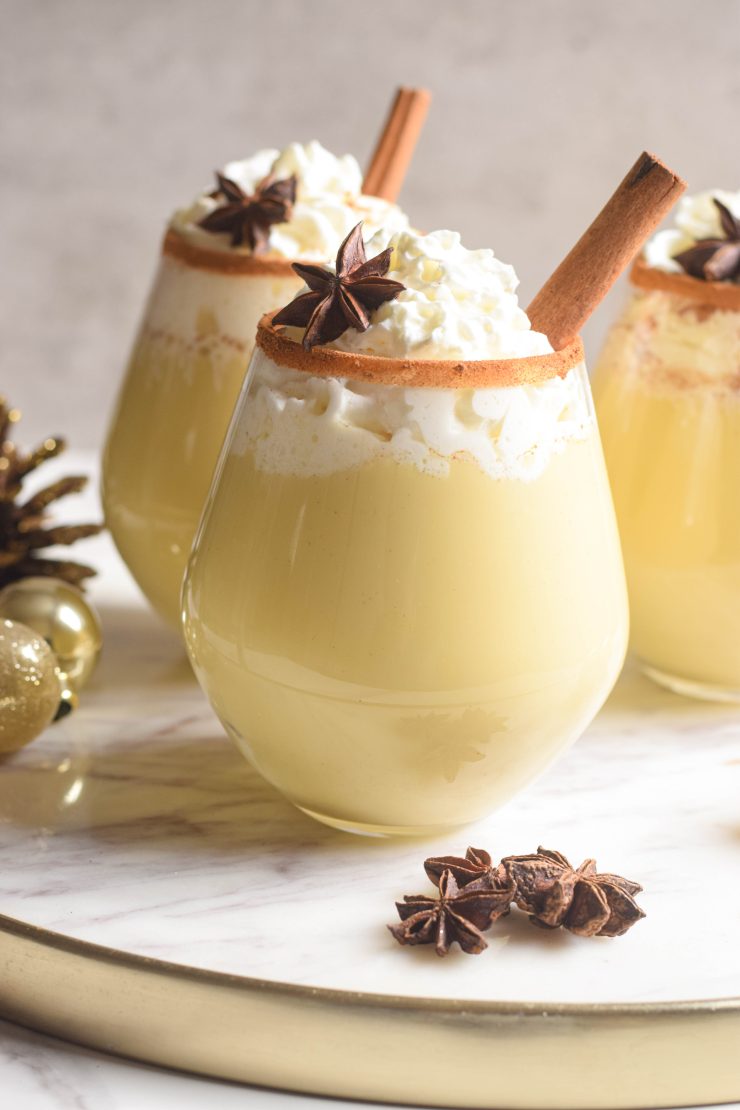
Spiked Eggnog Recipe
Eggnog is good, but spiked eggnog is even more festive. It is excellent, especially for cold winter evenings. It warms your belly and body!
Just make sure you go easy with it because it can be very deceiving! Eggnog is one of those drinks that goes down smoothly, and you don’t feel alcohol.
Always Add alcohol after chilling for maximum impact.
Best Alcohol for Homemade Eggnog
Most people go for darker and amber-colored liquor but don’t limit yourself. In my country, vodka is and was the way to go. Plenty of creamy and clear alcohols will complement this holiday cocktail just as much. The amount of alcohol used is based on your preference.
These are our favorites:
- Vodka
- Bourbon
- Aged rum or dark rum
- Brandy
- Irish whiskey
- Scotch whisky
- Brandy
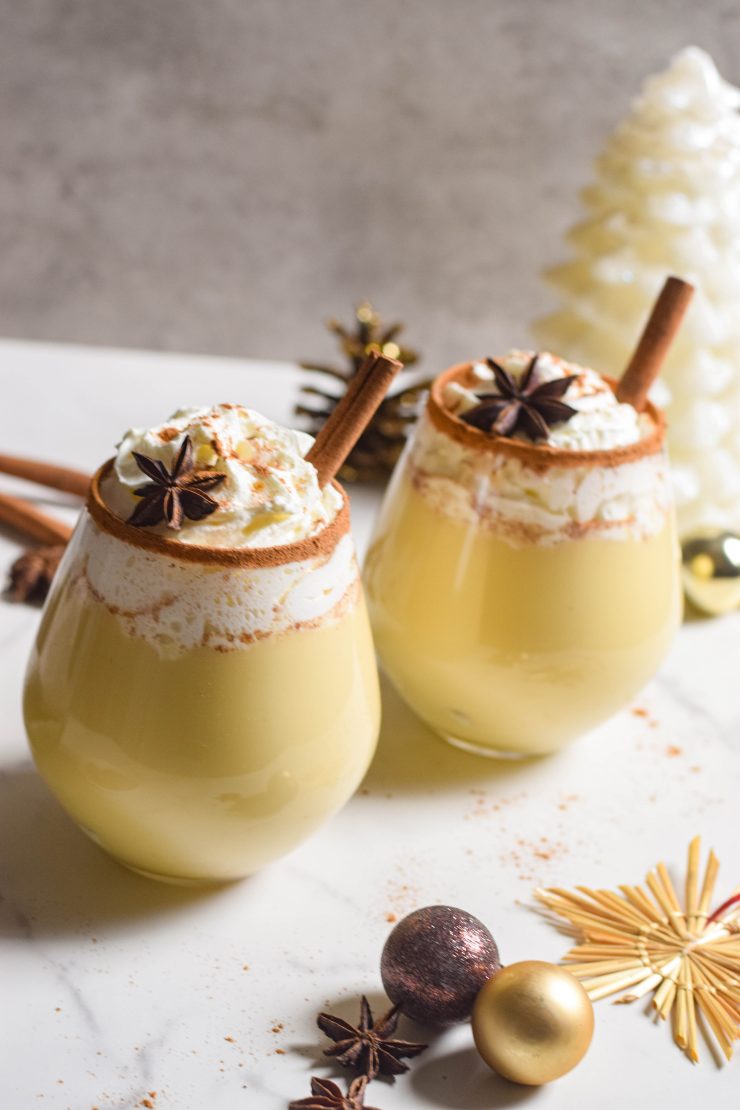
Storage
Making eggnog ahead of time and storing it properly is a convenient strategy, especially during the busy holiday season. Here are guidelines for making ahead and storing homemade eggnog:
Making Eggnog Ahead of Time:
- Prepare the Base: Follow the eggnog recipe, preparing the base by combining the egg yolk and milk mixture along with sugar, spices, and any optional alcohol. Heat, temper, and flavor the mixture as directed.
- Refrigerate the Base: Allow the eggnog base to cool to room temperature. Once cooled, cover the bowl or container with plastic wrap or an airtight lid and refrigerate for at least two hours or, ideally, overnight. This resting period allows the flavors to meld and intensify.
- Whip Egg Whites Just Before Serving: If your recipe involves whipping egg whites to create a frothy texture, it’s best to do this step just before serving. The whipped egg whites can be folded into the chilled eggnog base right before you’re ready to enjoy it.
Storage Guidelines:
- Refrigeration: Eggnog should always be stored in the refrigerator to prevent the growth of harmful bacteria. The cold temperature inhibits bacterial growth and helps maintain the freshness of the eggnog.
- Airtight Container: Use an airtight container to store eggnog. This prevents the absorption of odors from the refrigerator and helps maintain the eggnog’s flavor.
- Avoid Freezing: While eggnog can be refrigerated for a few days, freezing it is generally not recommended. The texture may change upon thawing, and there’s a risk of separation.
- Serve Chilled: Eggnog is best served chilled. Keep it in the refrigerator until you’re ready to enjoy it, and consider placing the serving glasses or mugs in the freezer for a short time before serving to enhance the overall experience.
Tips for Serving:
- Garnish Fresh: Add any final garnishes, such as a sprinkle of nutmeg or a cinnamon stick, just before serving. This ensures a fresh and appealing presentation.
- Stir Before Serving: If the eggnog has been sitting in the refrigerator for an extended period, give it a gentle stir before serving to ensure that any settled ingredients are well mixed.
MORE HOLIDAY RECIPES:
Did you make this recipe?
Please let me know how it turned out for you! Leave a comment below and share a picture on Instagram with the hashtag #thetastesoflifeholisticblog

Holiday Magic in the Kitchen: Homemade Eggnog Delight
Ingredients
- 2 cups whole milk
- 1 cup whipping cream
- 6 eggs yolks large
- 1/2 cup sugar- I used coconut sugar
- 1 tsp cinnamon
- 1 tsp nutmeg
- 1 tbsp vanilla
- pinch salt
Garnish
- star anise
- cinnamon stick
- nutmeg
- whipping cream
Instructions
- Eggs: The star of the show, eggs provide the rich, creamy texture that is characteristic of eggnog. Both the yolks and whites are used, with the yolks contributing to the velvety consistency and the whites being whipped to create a frothy, airy texture.
- Dairy: Whole milk and heavy cream are essential components, offering a luxurious mouthfeel to the eggnog. Combining these dairy products creates a harmonious balance between richness and smoothness.
- Sweetener: Traditionally, white sugar is used to sweeten eggnog. However, you can experiment with alternatives like brown sugar or a combination of both to add depth and complexity to the sweetness. I used coconut sugar.
- Spices: Ground nutmeg and cinnamon are the quintessential spices that give eggnog its distinct flavor profile. Freshly grated nutmeg adds an aromatic quality, while cinnamon provides a warm, comforting undertone.
- Vanilla Extract: A touch of vanilla extract enhances the overall flavor profile of eggnog, adding a sweet and aromatic dimension that complements the spices.
- Whip the Egg Whites: Whip the egg whites in a clean, dry bowl until stiff peaks form. Gently fold the whipped egg whites into the chilled eggnog mixture, creating a light and frothy texture. Serve immediately. ( You can totally skip this process if you want. This way your eggnog can stay refrigerated, and you can drink it later).
- Serve and Enjoy: Ladle the homemade eggnog into cups or mugs, garnishing each serving with a sprinkle of ground nutmeg. Optionally, add a cinnamon stick for a festive touch. Serve chilled and savor the rich, creamy goodness of your homemade creation.
- Alcohol (optional): While not a traditional ingredient, adding spirits like rum, bourbon, or brandy is a popular customization. The alcohol contributes to the flavor and acts as a preservative, allowing the eggnog to age and develop more complexity over time.

